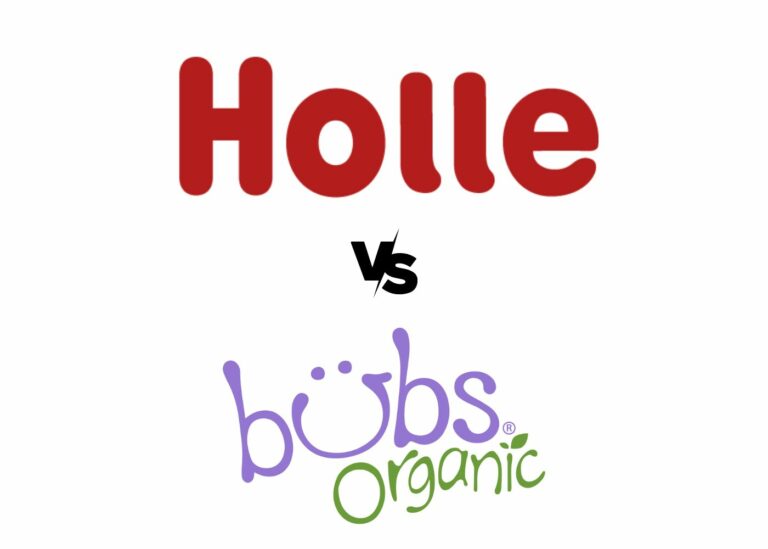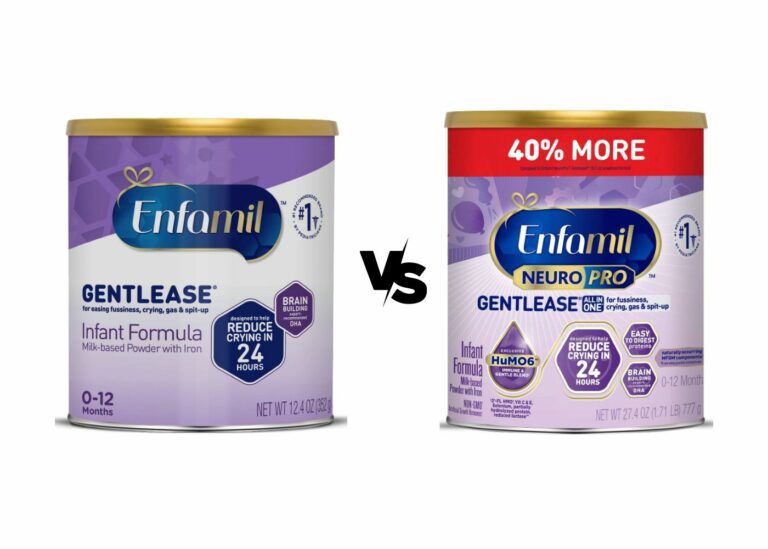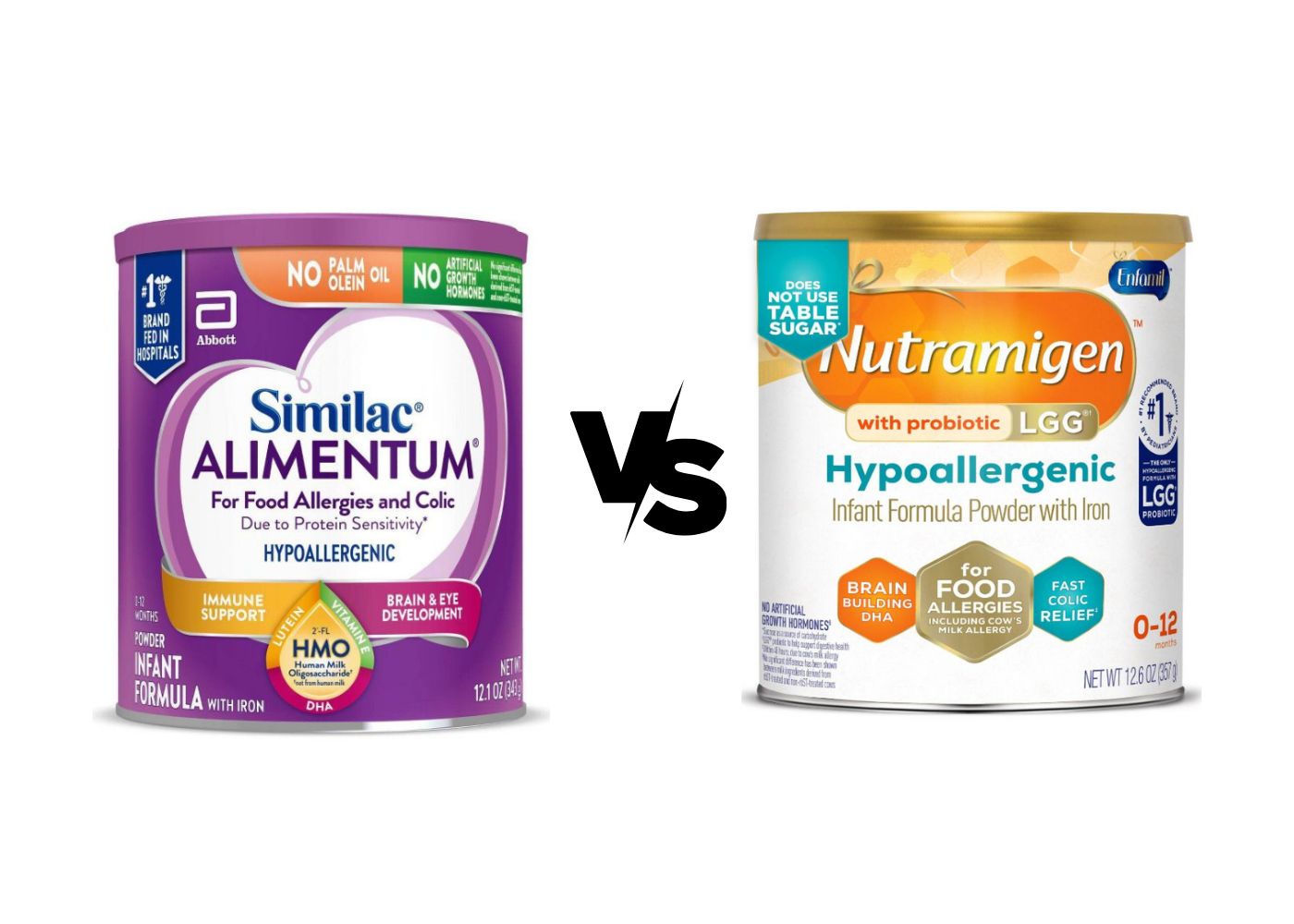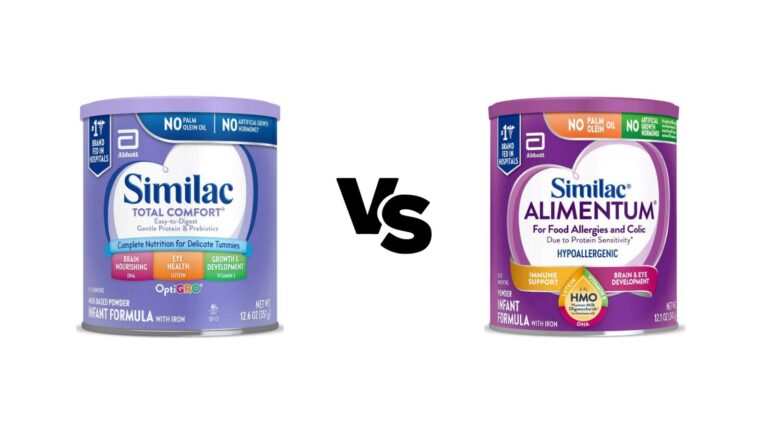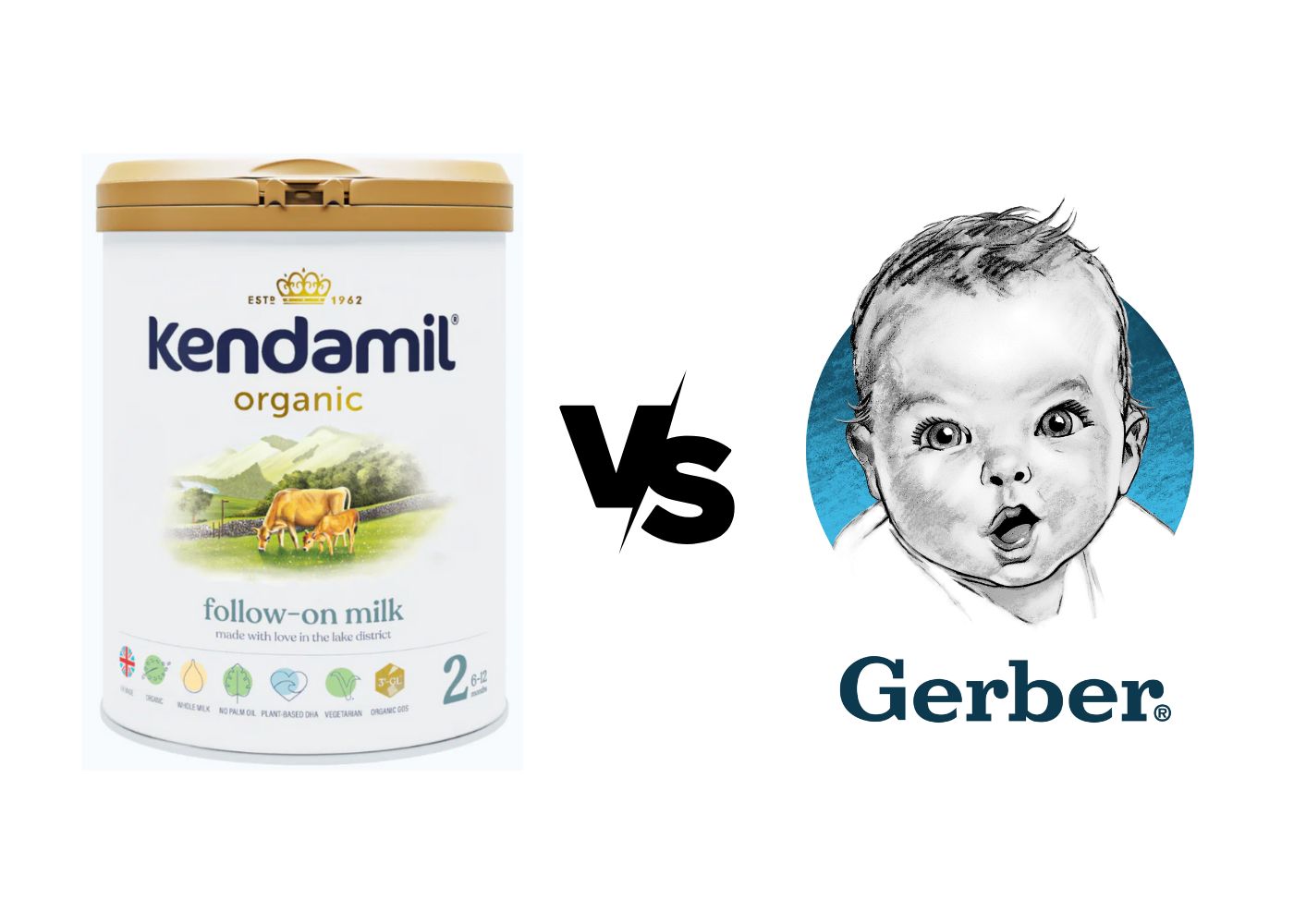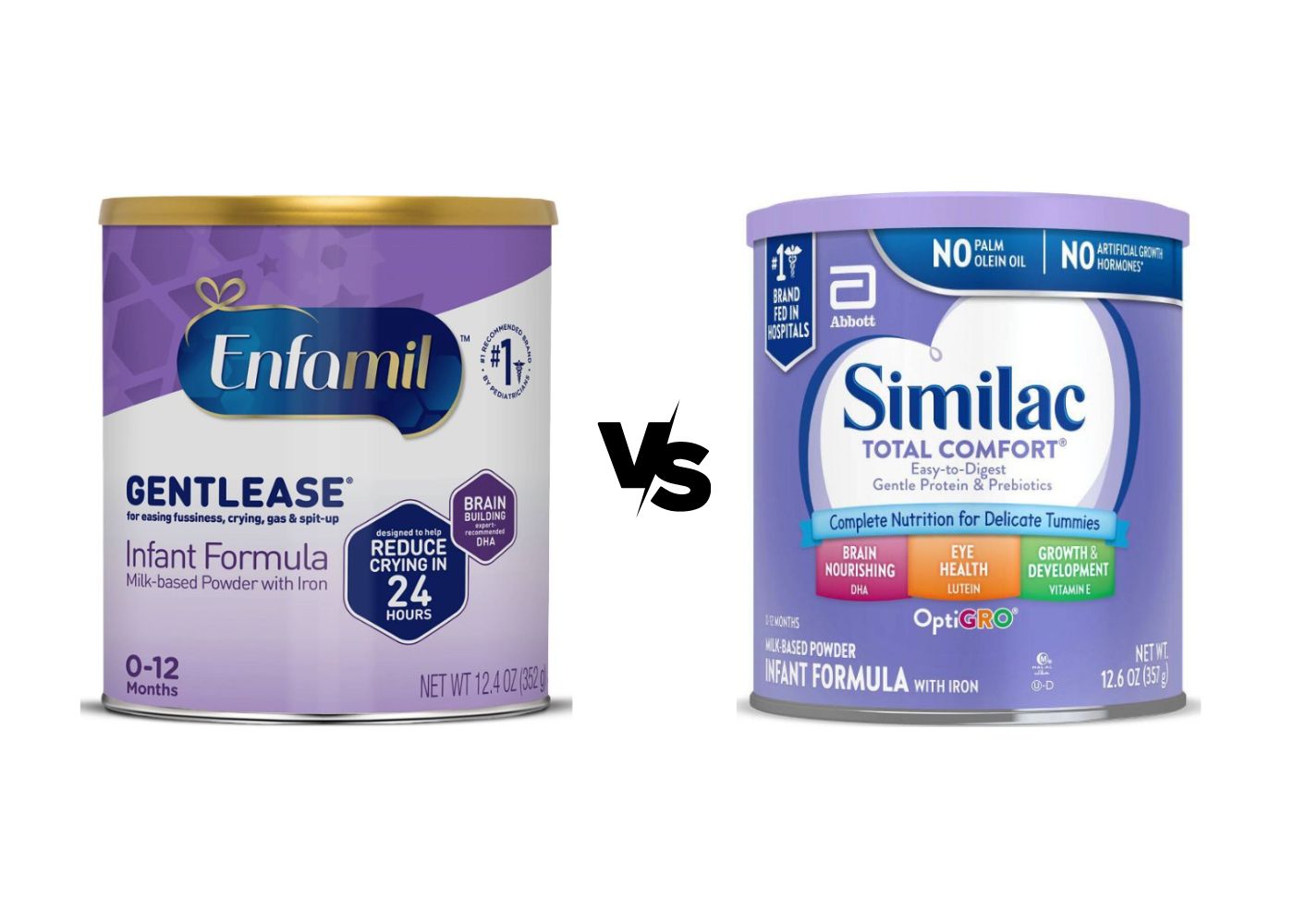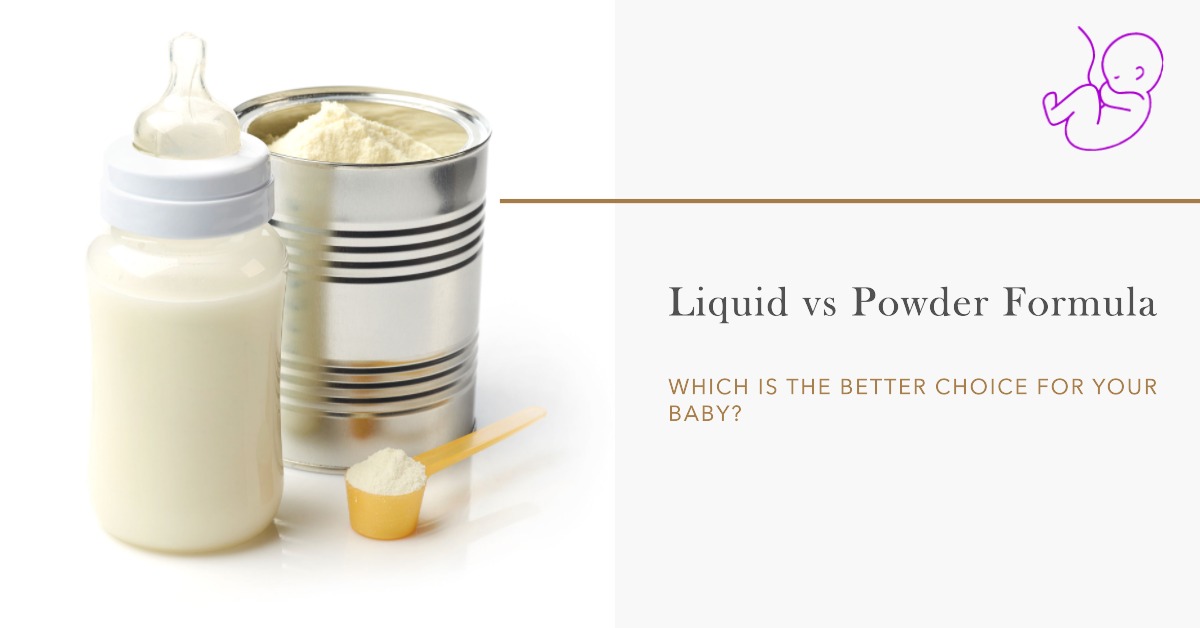
Key Differences Table Between Liquid and Powder Formula
| Powder Formula | Liquid Concentrate Formula | Ready-to-Feed Formula | |
|---|---|---|---|
| Cost | Most affordable | Mid-range | Most expensive |
| Convenience | Needs mixing | Needs dilution | Ready to use |
| Nutrition | Same | Same | Same |
| Shelf Life | Long | Medium | Short |
| Travel-Friendly | Yes | Yes, but needs water | Yes |
| Hygiene | Needs sterilization | Needs sterilization | Sterilized |
| Storage | Room temperature | Refrigeration | Refrigeration |
| Prep Time | More | Less | None |
There are three main forms of formula: powdered, liquid concentrate, and ready-to-feed.
Powdered formula typically offers the lowest cost but requires mixing with premeasured water, while liquid concentrate requires adding water and shaking.
Ready-to-feed is the most convenient option as it requires no preparation but comes at a higher price.
But are there any nutritional differences between the three?
Hardly, but if there are any, they are insignificant. All formulas, whatever their type, have the same nutritional value.
The brand and ingredients are much more important factors than the type of formula when it comes to nutrition.
Having said all this, in this blog post, we’ll explore the differences between liquid and powder formulas in-depth to help you decide what’s best for you as a parent.
Let’s get after it!
*Related read: What’s the best water for infant form
Overview of the three types of formula
Liquid Concentrate: Convenient, similar preparation to powdered formula. Higher cost but ease of use and quicker preparation time can outweigh the expense.
Ready To Use: Most convenient, pre-mixed with no additional water needed. Expensive, not ideal for tight budgets or multiple babies.
Powder Formula: Popular and versatile, budget-friendly compared to liquid options. Lightweight and easily transported.
Liquid Concentrate
Liquid concentrate formula offers a balance between convenience and cost-effectiveness for new moms. In terms of preparation, it works similarly to powdered formula; mix the liquid concentrate with water according to the package instructions.
However, it’s essential to consider the costs associated with liquid concentrate formulas as they tend to be pricier than their powdered counterparts – approximately 18% more expensive ($3.29/liter compared to $2.78/liter).
Despite this higher price point, many parents find the benefits of using liquid concentrate formulas outweigh the extra expense due to their ease of use and quicker preparation time.
Ready To Use
Ready-to-use liquid formula is the most convenient option for busy moms looking to save time. This type of infant formula comes pre-mixed and requires no additional water, making it a hassle-free choice when you’re on the go or handling late-night feedings.
However, this convenience comes at a cost – literally. Ready-to-use liquid formula tends to be the priciest option among the three types of formula available.
For example, if you have multiple babies or tight budget constraints, ready-to-use might not be the best long-term solution due to its higher price compared to powder or liquid concentrate alternatives.
Powder Formula
Powder formula has become popular among new moms due to its convenience and wide range of options. This type of infant nutrition is available in milk- and soy-based varieties.
The benefits of powder formula extend beyond its adaptability for different dietary needs; it also tends to be more budget-friendly than liquid concentrate or ready-to-feed formulas.
Additionally, since it’s lightweight and easily transported without refrigeration, this can make life simpler for busy parents on the go.
Liquid Concentrate Formula
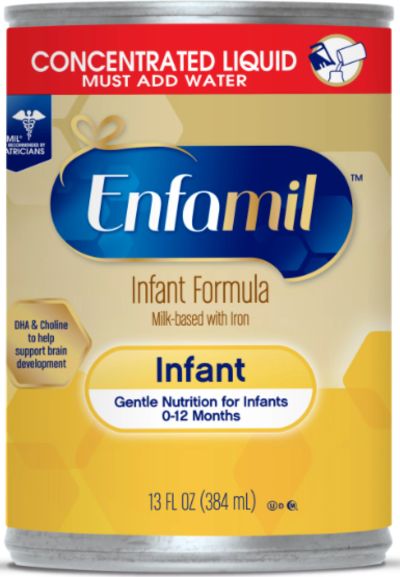
Pros Of Liquid Concentrate Formula
Easy preparation: Simply mix the concentrate with water to create the desired consistency.
Less mess: Liquid concentrate formula can be less messy than measuring and mixing powdered formula, making it a cleaner option for busy moms.
Faster preparation time: Liquid concentrate can save time during feedings since it dissolves more quickly than powdered formula.
Longer shelf life: Compared to ready-to-feed formulas, liquid concentrates have a longer shelf life when properly stored in unopened containers.
Versatility: Suitable for all infant ages and dietary needs, liquid concentrate formulas are available in various options – including dairy-based, soy-based, and specialized formulas catering to specific requirements like allergies or reflux issues.
Travel-friendly: The compact size of liquid concentrate containers makes them easy to pack and transport on the go, without worrying about spills or leaks.
Cons Of Liquid Concentrate Formula
Liquid concentrate formula is more expensive than powdered formula.
It has a short shelf life once opened and needs to be used within 48 hours.
The concentrated solution requires dilution with water which can lead to measurement errors if not done correctly.
Compared to ready-to-use formula, it requires more prep time as you must mix it with water before feeding.
Liquid concentrate formula may go bad faster if not stored properly, or the bottle gets contaminated during preparation.
When To Consider Using Liquid Concentrate Formula
If your baby has a sensitive digestive system or is prone to infections, liquid concentrate formula may be the best option. Liquid concentrate formula is less likely to contain harmful bacteria that can cause infections than powdered formula.
However, it’s important to note that liquid concentrate formula is more expensive than powdered formula but less expensive than ready-to-feed formula. So, if cost is a major consideration for you when choosing an infant formula, then you may want to consider other options.
Ready-to-Feed Formula
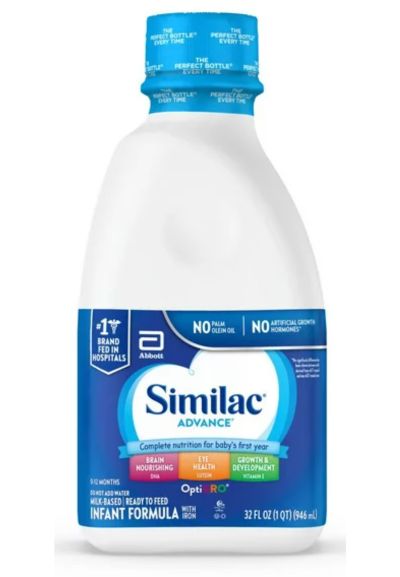
Pros Of Ready-to-Use Formula
Convenience: This formula requires no additional preparation or clean-up, making it the quickest and most convenient option for busy moms on the go.
Sterilization: Ready-to-Use formula is pre-packaged in sterilized containers, ensuring your baby’s food is safe from bacteria and other contaminants.
Cost-effective?: While Ready-to-Use formula may be more expensive than powder or liquid concentrate formulas, it can still be cost-effective considering the time and resources saved from not mixing or sterilizing bottles.
Hygiene: Since no mixing is involved, Ready-to-Use formula reduces the risk of contamination during preparation, providing a more hygienic feeding option for your baby.
Packaging: The convenient packaging of Ready-to-Use formula makes it easy to store and transport without worrying about spills or leaks.
Cons Of Ready-to-Use Formula
Cost: Ready-to-use formula is generally the most expensive option compared to powdered and liquid concentrate formulas. For families on a tight budget, this can add up quickly.
Shelf life: Once opened, ready-to-use formula has a shorter shelf life than powder or liquid concentrate formula. This means that it must be consumed within 48 hours after opening, or else discarded.
Environmental impact: Ready-to-use formula typically comes in non-reusable plastic bottles that generate more waste compared to powdered or liquid concentrate formulas.
When To Consider Using Ready-to-Use Formula
Ready-to-use formula is an excellent option for busy parents who are always on the go due to its convenience. It saves time as it requires no clean-up or preparation, making it an ideal choice for parents with a hectic lifestyle.
Additionally, ready-to-use formula can be more hygienic since there’s no need for sterilization or mixing, which reduces the risk of contamination.
They’re also a great alternative when water quality is uncertain while traveling abroad.
Powder Formula
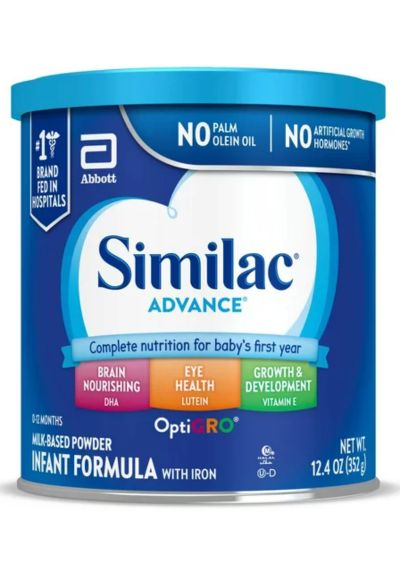
Pros Of Powder Formula
Cost-effective: Powder formula is cheaper compared to liquid concentrate and ready-to-use formulas. This means you can save significant money in the long run.
Longevity of formula: Powdered formula can last longer than liquid concentrates or ready-to-use formulas, as it does not expire as quickly once opened.
Convenience: Powdered formula can easily be stored in a dry place at room temperature.
Availability: Finding powdered formula is much easier than finding liquid concentrate or ready-to-use formulas, as most stores carry this type of formula.
Customizable: You have more control over how much water to use when preparing powdered formula, allowing you to adjust the concentration based on your baby’s needs.
Cons Of Powder Formula
Formula preparation can be time-consuming: Unlike ready-to-use liquid formula, powder formula needs to be measured and mixed with water before feeding.
Risk of measurement errors: Measuring and mixing powder formula requires precision, and mistakes in measurement can lead to under-nutrition or over-nutrition in babies.
Storage limitations: Once powder formula has been opened, it should be consumed within one month or less to avoid spoilage. Additionally, it should be stored away from moisture and heat sources to prevent clumping.
When To Consider Using Powder Formula
Powder formula can be a great option for parents who want to save money on infant formula. It is less expensive than liquid concentrate or ready-to-use forms and has a longer shelf life once opened.
Powdered infant formula is also widely available and can be used for healthy and premature infants.
However, it’s important to note that powdered formula is not sterile and may contain harmful bacteria, so proper sterilization techniques are essential when preparing it for your little one.
How To Measure And Mix Liquid And Powder Formulas
Liquid Concentrate Formula: You will need equal amounts of water and concentrate to mix liquid concentrate formula. Follow the manufacturer’s instructions on the label for measurements. Generally, one part concentrate is mixed with one part water that has been boiled and then cooled.
Ready-to-Use Formula: Ready-to-use formula requires no mixing as it is pre-mixed and ready to be poured into a bottle. Simply shake well before use.
Powder Formula: To mix powder formula, start by measuring the exact amount of clean water using a measuring cup. Always follow the manufacturer’s instructions on how much water should be used for each scoop of powder – this will vary depending on the brand. Next, add the correct amount of powder to the measured water – do not add more or less than what’s recommended on the label. Shake or stir well until all lumps have dissolved.
Some additional tips:
Do not dilute infant formula unless instructed by your pediatrician.
Use only clean utensils when preparing infant formula.
After mixing powdered infant formula, let it sit for a minute or two to allow any remaining clumps to dissolve before serving it to your baby.
How To Save And Store Liquid And Powder Formulas
Always follow the preparation instructions provided by the manufacturer.
After opening a can of powdered formula, always keep it out of moisture and air.
Store cans of powdered and concentrated formula in a cool, dry area, away from heat sources such as a hot car or stove, but not in the refrigerator.
Opened cans of powdered infant formula should be used within one month or before the expiration date, whichever comes first.
Bottles made from powdered formula that have been mixed with water can be stored in the refrigerator for up to 24 hours. Discard any unused portions after this time has elapsed.
Liquid concentrate formula should be refrigerated immediately after opening and used within 48 hours.
FAQs:
1. Which is better: liquid or powder formula for my baby?
The choice between liquid and powder formula depends on personal preferences and convenience. Liquid formula is ready to use straight from the bottle, while powdered formula requires mixing with water before being served. However, powdered formulas are more affordable, easily transportable, and have a longer shelf life than liquid formulas.
2. Is there any nutritional difference between liquid and powder formula?
Both types of formula meet the same nutritional requirements mandated by regulatory bodies, but they vary slightly in their ingredient ratios due to different manufacturing processes used in making them. In general, both forms offer a similar level of nutrition needed for healthy development in babies.
3. Can I switch back and forth between using powder and liquid formulas?
It’s safe to alternate between different infant formula forms as long as you follow instructions properly during preparation to guarantee proper dilution or mixing ratio based on manufacturer guidelines.
We’re Maria and Alberto, a married couple and educators who are nutrition enthusiasts. Even before we had kids, we were already crazy about nutrition.
We’d read scientific articles, watch videos from nutritionists, and spend hours listening to nutrition podcasts.
Today, we continue doing this, but in a different way, as we’ve learned to sift through the noise and trends. Nutrition, like any other field of knowledge, the more you read and learn, the more you develop a comprehensive understanding of reality, and that’s what has happened to us.
Before having our first child, we focused on learning everything we could about child nutrition, using the same techniques we had already employed, backed by our extensive knowledge in nutrition.
Our mission is to help other parents with their children’s nutrition, to help them become the best versions of themselves.
If we are what we eat and drink, which is absolutely true, let’s do it right!


